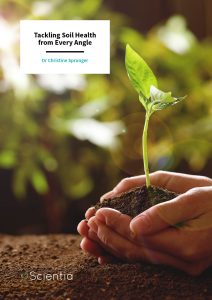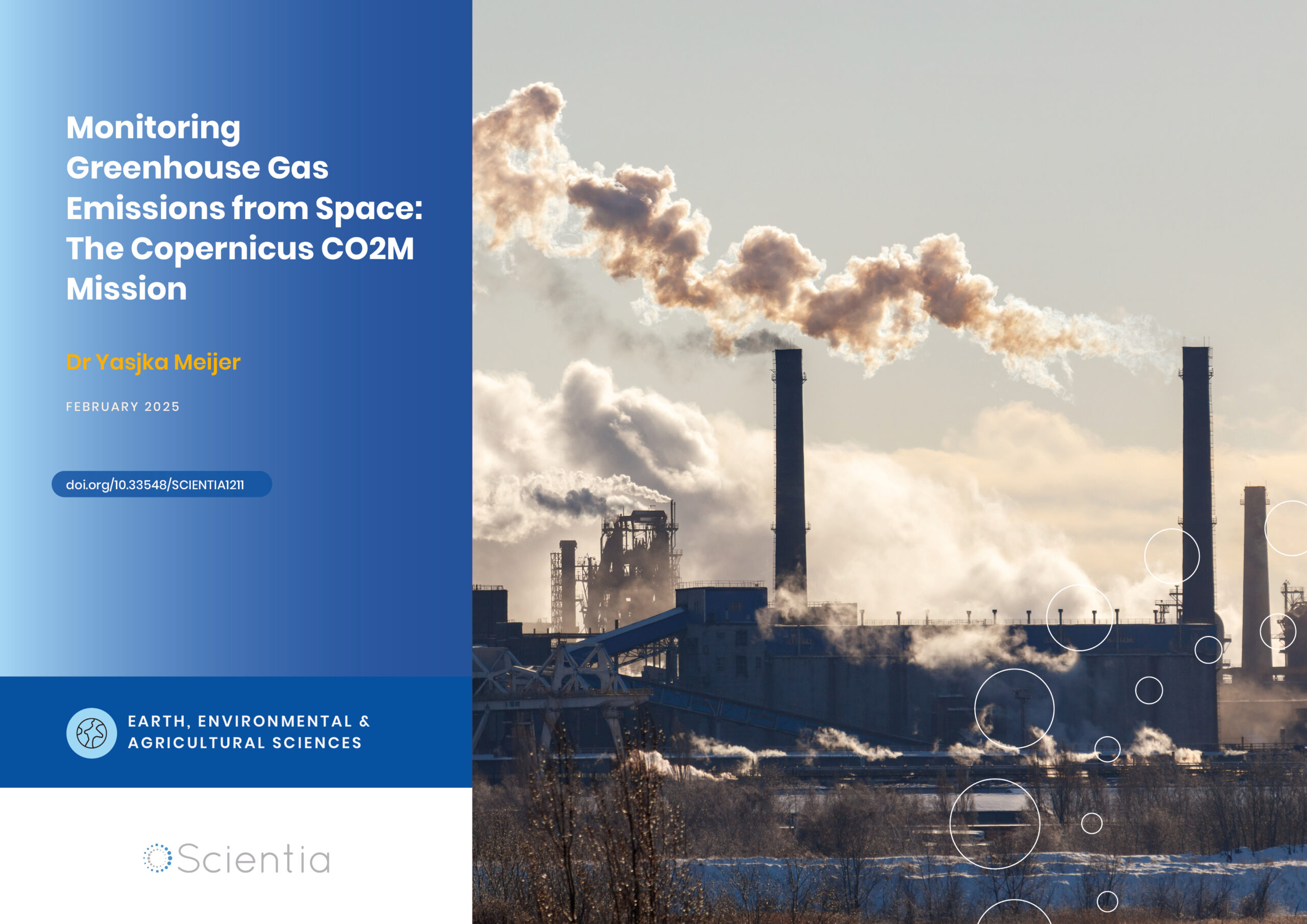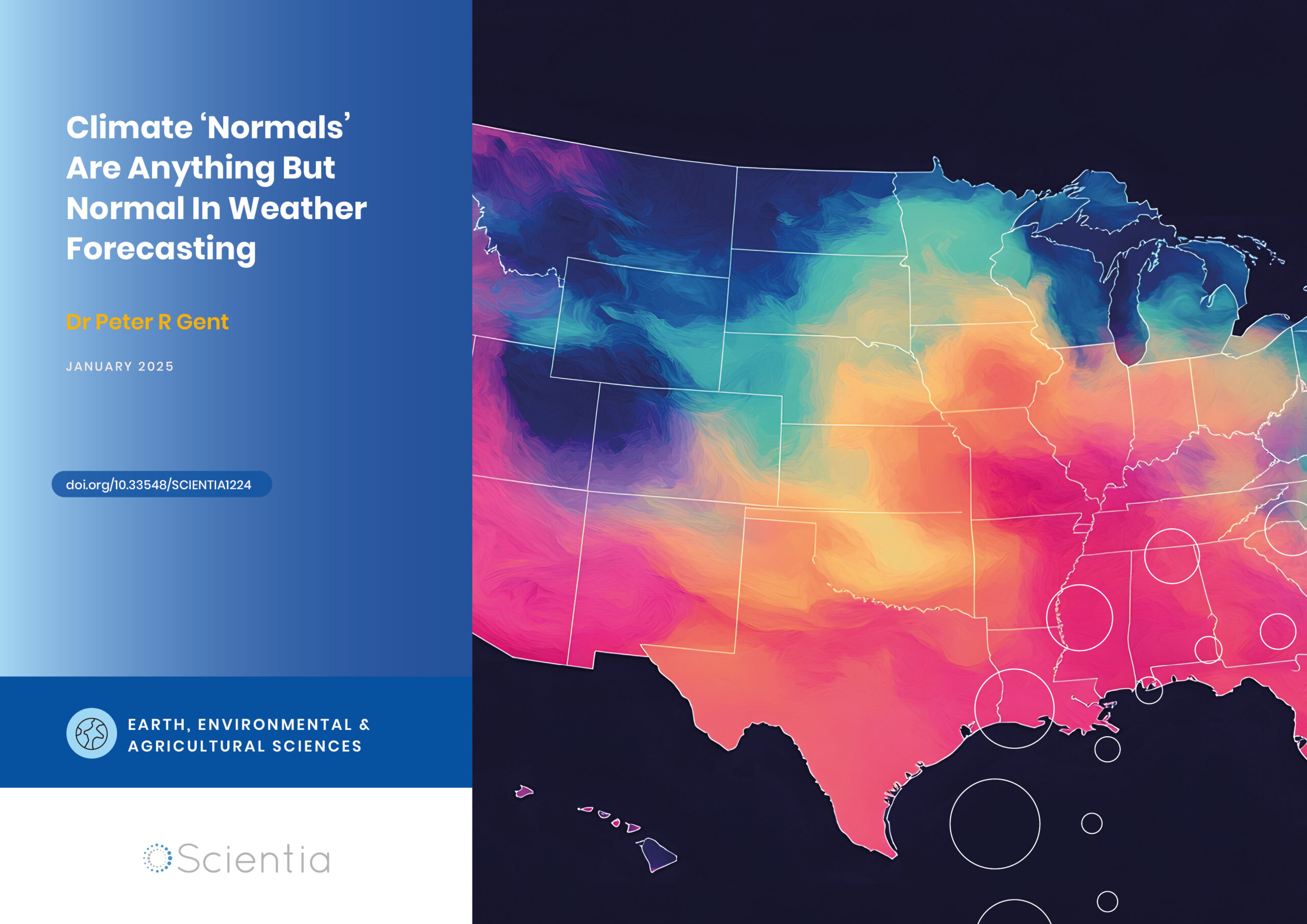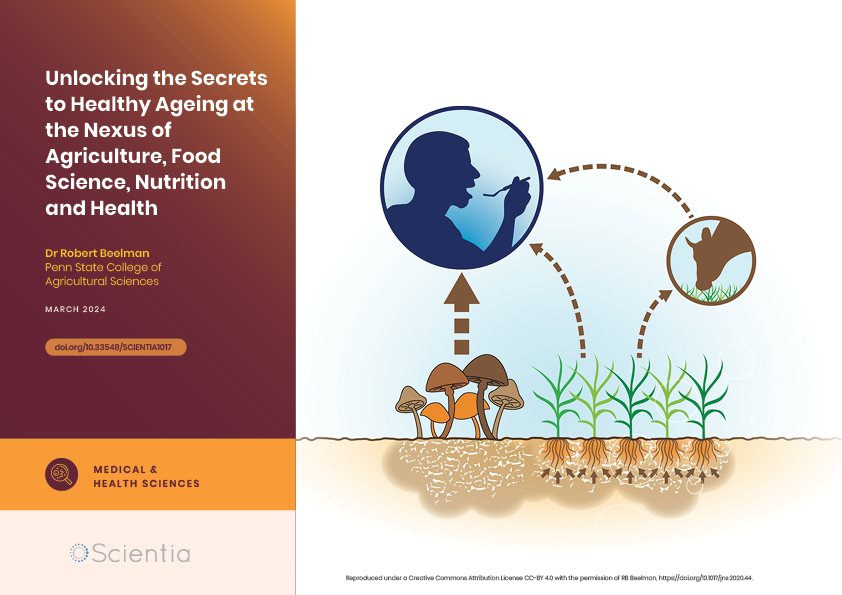Dr Christine Sprunger – Tackling Soil Health from Every Angle
Soil health is fundamental to feeding the growing human population and mitigating the most damaging effects of global climate change. Despite its importance, the complex and dynamic nature of soil means that best practices for protecting and restoring Earth’s soil are not always available. By bringing together different fields and employing innovative new techniques, Dr Christine Sprunger and her team at The Ohio State University are gaining insights on how to improve soil health and tackle some of our planet’s biggest threats.
Save Our Soils
The soil under our feet is much more important than many of us believe. Soil is not the static substance it can appear to be at first glance. Instead, soils are diverse environments for a wide variety of lifeforms, and host some of the planet’s most important chemical and biological cycles. Soil also sits at the centre of many of humanity’s greatest challenges, including climate change and food insecurity.
As the global human population grows, we face multiple seemingly contradictory goals. With an estimated 26.4% of Earth’s population experiencing food insecurity, we need to greatly increase our global food production. At the same time, we also need to reduce the negative impact of agriculture on Earth’s soils – a critical resource that is quickly becoming degraded around the world.
Over the past few decades, the major focus of conventional agriculture has been to increase crop yields. Most cropping systems involve adding synthetic fertilisers and churning up the soil between harvests, in a process known as tilling. Tilling is a common practice often used to mechanically destroy weeds and prepare the soil for planting. In the short term, tilling and adding synthetic chemicals lead to huge increases in yields; however, these practices degrade soils, causing them to lose nutrients over the long term.
As soil becomes degraded by chemical fertilisers, pesticides, tilling and other management techniques, it can lose its structure and become washed away. In fact, billions of tonnes of fertile topsoil are lost every year, and with it the crucial ecosystem services it provides, including its amazing ability to simultaneously produce food, purify water and store carbon.
Furthermore, agriculture is a major source of greenhouse gas emissions, contributing to global climate change. By increasing the severity and frequency of extreme weather events such as droughts and storms, climate change further threatens our ability to grow food. Not only do fertilisers indirectly release greenhouse gases during their manufacture, but they also directly release nitrous oxide within the soil. Nitrous oxide is a potent greenhouse gas with a warming effect 300 times that of carbon dioxide.
Healthy soil is a vital piece of the puzzle in our fight against global climate change. Not only are healthy soils more resilient to climate events, but they can actually act as a carbon sink, capturing carbon dioxide from the atmosphere and storing it in the ground as organic matter. Globally, soils store as much carbon as all plants above ground. Thus, if restored and protected, soils offer a real option for mitigating global climate change.
As soil is a complex dynamic system, it can be difficult to obtain a clear picture of what constitutes as ‘healthy’. Fortunately, emerging techniques have given us new tools that allow scientists to measure soil’s vital signs.
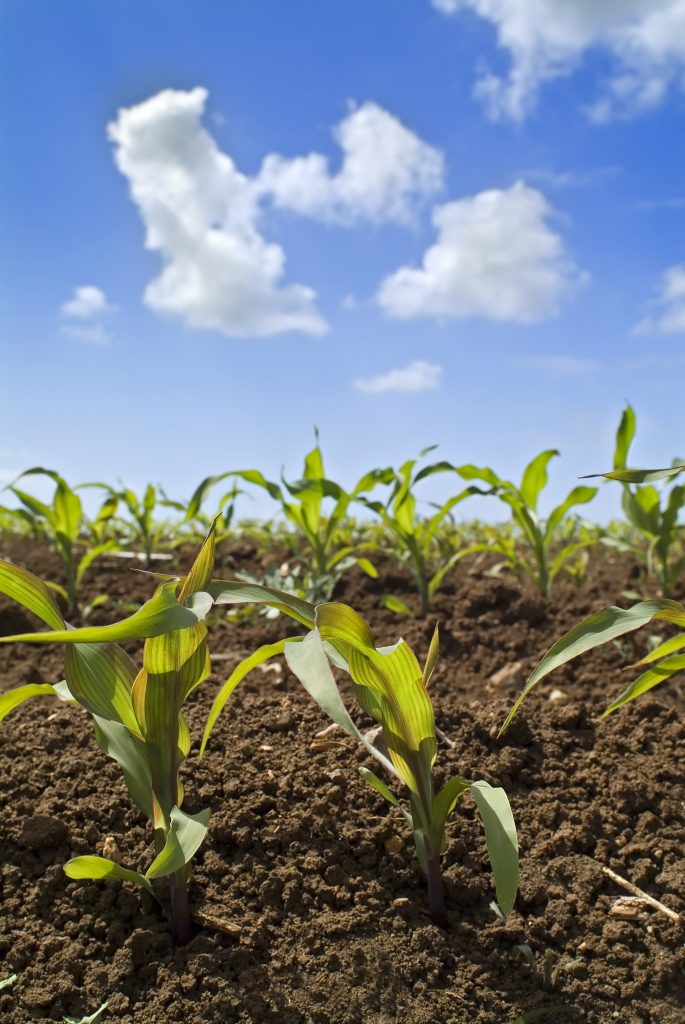
Perennial Plants and Crop Diversity
Dr Christine Sprunger and her colleagues at The Ohio State University are using new soil indicators to investigate how different management practices can lead to real improvements in soil health. In a recent study, Dr Sprunger’s team examined the effects of different types and mixtures of crops on soil health.
‘We have a primary goal of examining how global change biology, biodiversity, and management impact soil health and rhizosphere processes for enhanced ecological function in annual and perennial dominated landscapes,’ explains Dr Sprunger.
Perennial plants are plants that live and grow year after year, as opposed to annual plants, which grow, produce seeds and die all within one growing season. Perennial plants have some advantages: they are in the soil year-round, exhibit deep root systems and biological activity, ultimately reducing erosion as the soil is never left bare.
Dr Sprunger and her colleagues used new soil health indicators that are more sensitive to changes in soil management than previous approaches. They hoped to gain a deeper understanding of soil carbon dynamics. Greater knowledge of these mechanisms would help researchers to understand exactly how soils store and release carbon dioxide, in order to find ways of maximising the amount of carbon stored. The team examined soil health indicators at the Biofuel Cropping System Experiment, a long-term experimental trial located at the W.K. Kellogg Biological Station in southwest Michigan. The experiment was established in 2009 and consists of annual row-crops, perennial grasses of just one species, and multiple species of perennial plants mixed together.
Their findings demonstrated that having a diverse mixture of different crops planted together enhanced soil health in both annual and perennial systems. They saw the largest gains in soil health in plots containing a mixture of perennial species, showing that this could be an effective strategy for stabilising carbon into the soil – allowing the soil to act as a carbon sink.
‘The realisation that both perenniality and diversity are needed for accelerated accumulation of carbon is a novel finding that has important implications for land managers working to sequester carbon,’ says Dr Sprunger.
Her team’s study gives more evidence to core soil health practices – namely increased crop diversity, year-round cover, living roots, and reduced soil disturbance from tilling.
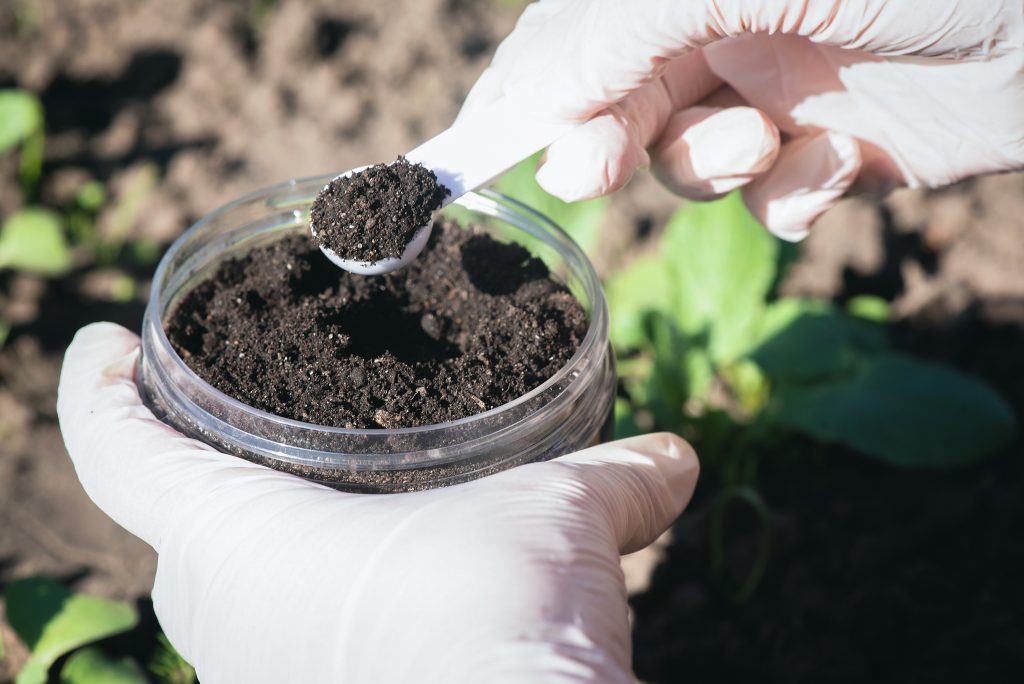
Science via Mail
Agricultural scientists will usually have test strips of land at their research centres to study different agricultural practices. This allows them to control various research parameters, so that they can isolate the benefits and disadvantages of each different factor. However, such studies can often fail to capture all of the different, complex and complementary approaches that farmers use to manage their land. Therefore, on-farm studies can offer a much more realistic picture when assessing the effects of farming practices.
Therefore, Dr Sprunger and her colleagues sought to find evidence for how different organic farming practices affect soil health in the context of real farms. ‘I work on interdisciplinary teams to assess how management impacts soil health on local and regional scales,’ says Dr Sprunger. ‘Linking management practices to soil health outcomes at regional scales has rarely been done, making this work extremely innovative.’
The team wished to determine which organic farming practices are best suited to which soil types using data collected from real working farms. However, practical constraints usually mean that a study like this can only be conducted on a very small number of farms. The team had an ingenious solution to this issue: mail-in soil. The team asked farmers to collect samples of their soil and mail them to the university for analysis.
Using this novel method, her team collected 195 samples from organic cornfields across Michigan, Indiana, Ohio, and Pennsylvania. This alone would provide useful data, but by combining it with surveys on the farmers’ management practices, the team could tease apart the complex interactions between soil type, management practices and soil health.
Dr Sprunger showed that in a farm setting, increasing the diversity of crops was not enough. In fact, the farmers that had the best soil health indicators not only grew diverse mixtures of perennial species, but they also practised low tillage to minimise soil disturbance.

Planet of the Worms
Dr Sprunger and her lab noticed that most soil health research focuses only on bacteria and fungi, opening up new opportunities for investigating different organisms. ‘Our lab has recognised an important need in developing nematodes as a potential indicator of soil health,’ says Dr Sprunger.
Nematodes are microscopic worms found in soils across the world. These tiny worms are so ubiquitous, that it has been estimated that about four out of every five animals on Earth are nematodes. Nematodes live short lives, so their numbers respond quickly to changing environmental conditions. In addition, they feed on fungi and bacteria, and play numerous roles in soil cycling.
Dr Sprunger’s work is also gaining attention: she has been awarded a total of six grants to further explore nematodes as a potential indicator to assess ecosystem health. Findings from her team reveal that nematodes reflect how the nutrients in the soil are changing, offering important insights into the nitrogen and carbon cycles.
The Future of Soil
Climate change and conventional agricultural practices pose serious threats to one of our planet’s greatest assets: its soil. As extreme weather events increase in frequency, we need a deep understanding of how our soil will be affected. Dr Sprunger and collaborators have also received a large grant from the National Institute of Food and Agriculture to explore flooding impacts on soil dynamics in corn fields.
The health of Earth’s soils is fundamental to our ability to produce food in the face of climate change and other threats. However, with a deeper understanding of soil dynamics, we could transform humanity’s future on this planet, by enabling the soil to work as a carbon sink, and recovering damaged soil ecosystems – all while increasing global crop yields.
SHARE
DOWNLOAD E-BOOK
REFERENCE
https://doi.org/10.33548/SCIENTIA803
MEET THE RESEARCHER

Dr Christine Sprunger
School of Environment and Natural Resources
The Ohio State University
Wooster, OH
USA
Dr Christine Sprunger gained her PhD in Crop and Soil Sciences and Ecology, Evolutionary Biology, and Behavior at Michigan State University in 2015. Upon graduating, she became an NSF Postdoctoral Fellow in Biology at the Agriculture and Food Security Center at Columbia University.
Dr Sprunger then moved to The Ohio State University to work as a Postdoctoral Research Scientist in the School of Environment and Natural Resources. She now works in her current position as Assistant Professor of Soil Science and Rhizosphere Processes in the same department. In her research, Dr Sprunger focuses on interactions between soil, plants, water, animals and humans, and how we can build resilience in our agricultural systems in the face of a changing climate. Starting from August 2022, Dr Sprunger will be joining the Department of Plant, Soil, and Microbial Sciences and the Kellogg Biological Station at Michigan State University as an Assistant Professor of Soil Health.
CONTACT
E: sprunger.29@osu.edu
E: sprunge5@msu.edu
W: www.sprungerlab.com
KEY COLLABORATORS
Steve W. Culman, The Ohio State University
Tvisha Martin, The Ohio State University
Meredith Mann, The Ohio State University
Prabhjot Singh, The Ohio State University
Doug Jackson-Smith, The Ohio State University
Leo Diess, The Ohio State University
Caroline Brock, University of Missouri
Jordon Wade, University of Missouri
FUNDING
Great Lakes Bioenergy Research Center, U.S. Department of Energy, Office of Science, Office of Biological and Environmental Research (Award DESC0018409).
National Science Foundation Long-term Ecological Research program (DEB 1832042).
US Department of Agriculture NIFA Organic Agriculture Research & Extension Initiative (2014-51300-22331).
FURTHER READING
T Martin, J Wade, P Singh, CD Sprunger, The integration of nematode communities into the soil biological health framework by factor analysis, Ecological Indicators, 2022, 136, 108676. https://doi.org/10.1016/j.ecolind.2022.108676.
CD Sprunger, SW Culman, L Deiss, C Brock, D Jackson-Smith, Which management practices influence soil health in Midwest organic corn systems?, Agronomy Journal, 2021, 113, 4201–4219. https://doi.org/10.1002/agj2.20786
CD Sprunger, T Martin, M Mann, Systems with greater perenniality and crop diversity enhance soil biological health, Agricultural & Environmental Letters, 2020, 5, e20030. https://doi.org/10.1002/ael2.20030
REPUBLISH OUR ARTICLES
We encourage all formats of sharing and republishing of our articles. Whether you want to host on your website, publication or blog, we welcome this. Find out more
Creative Commons Licence (CC BY 4.0)
This work is licensed under a Creative Commons Attribution 4.0 International License. 
What does this mean?
Share: You can copy and redistribute the material in any medium or format
Adapt: You can change, and build upon the material for any purpose, even commercially.
Credit: You must give appropriate credit, provide a link to the license, and indicate if changes were made.
SUBSCRIBE NOW
Follow Us
MORE ARTICLES YOU MAY LIKE
Dr Sandra Grumelli | The Importance of the Choline in Chronic Lung Infections
People with chronic lung conditions like COPD and cystic fibrosis are vulnerable to lung infections caused by the bacterium Pseudomonas aeruginosa. These infections are often difficult to treat and can cause sudden worsening of symptoms, known as flare-ups or acute exacerbations. While we know P. aeruginosa triggers inflammation and damage in the lungs, much less is understood about how exactly it causes these flare-ups, or how it survives in such a harsh environment. Dr Sandra Grumelli from the Center of Investigations of Respiratory Diseases in Argentina, has explored the role of a common molecule called choline which is released during infection. Using a combination of mouse models and laboratory experiments, she has discovered that choline not only makes breathing harder, it also helps P. aeruginosa adapt to and persist in the lungs. Her research opens up new possibilities for tackling chronic infections by targeting the bacteria’s energy use and the way it responds to its environment.
Dr Yasjka Meijer | Monitoring Greenhouse Gas Emissions from Space: The Copernicus CO2M Mission
Atmospheric concentrations of carbon dioxide (CO2) and methane (CH4) have been steadily rising due to human activities, contributing to global climate change. Dr Yasjka Meijer from the European Space Agency is responsible for the objectives and requirements of the Copernicus Anthropogenic Carbon Dioxide Monitoring (CO2M) mission – a constellation of satellites that will enable the monitoring of anthropogenic greenhouse gas emissions from space with unprecedented accuracy and detail. This groundbreaking mission aims to support international efforts to reduce emissions and combat climate change.
Dr Peter Gent | Climate ‘Normals’ Are Anything But Normal In Weather Forecasting
Weather forecasters and meteorologists have long used the term ‘climate normal’ to describe average temperatures, but this seemingly innocuous phrase might be causing widespread public misunderstanding. New research suggests that describing temperature data as ‘normal’ leads many people to incorrectly assume these values represent the most common or expected temperatures when, in reality, actual temperatures regularly deviate significantly from these averages.
Dr Robert Beelman | Unlocking the Secrets to Healthy Ageing at the Nexus of Agriculture, Food Science, Nutrition and Health
Dr Robert Beelman is Professor Emeritus of Food Science and the Director of the Center for Plant and Mushroom Foods for Health at Penn State College of Agricultural Sciences. His groundbreaking research on the medicinal properties of mushrooms and vital nutrients like Ergothioneine has opened new pathways in understanding the link between diet, soil health, and human longevity.

